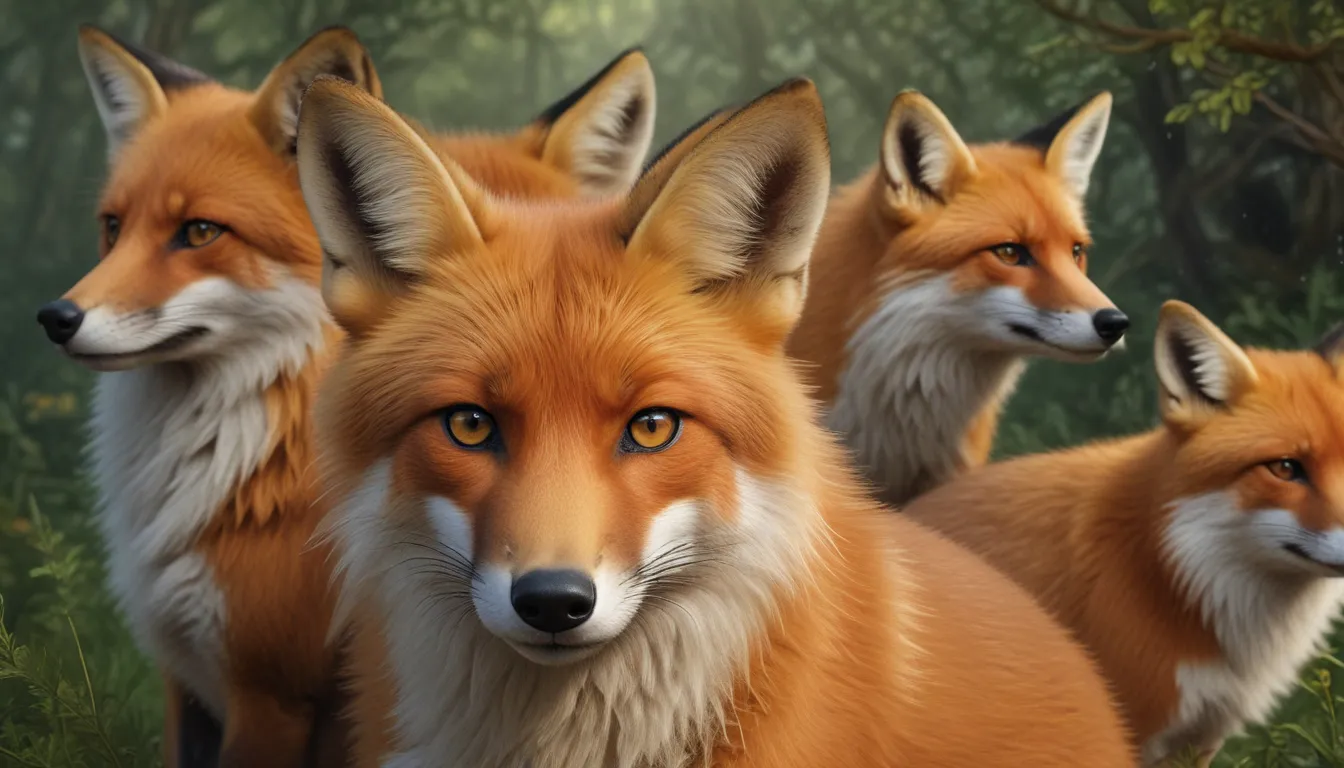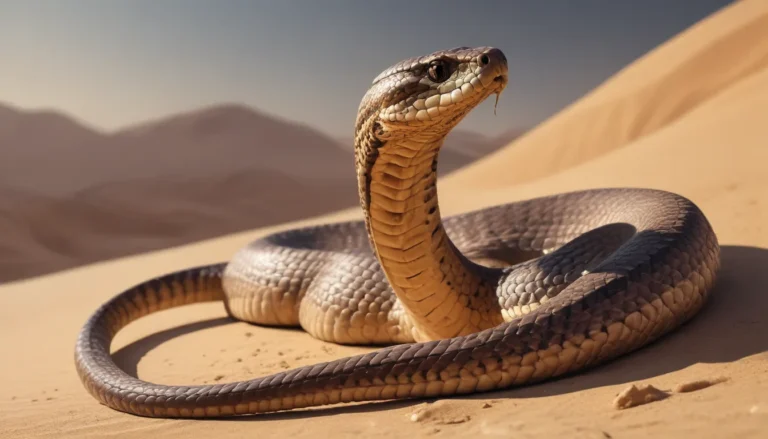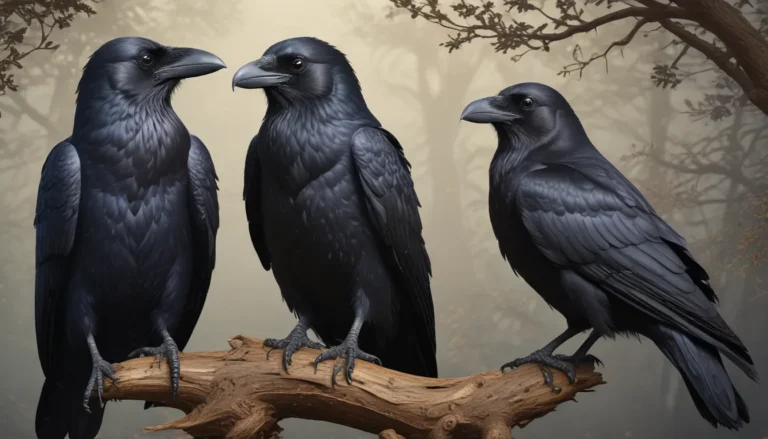The pictures we use in our articles might not show exactly what the words say. We choose these pictures to make you interested in reading more. The pictures work together with the words but don’t take their place. The words still tell you the important facts.
Foxes are mesmerizing creatures that captivate our attention with their adorable appearances and intriguing behaviors. While many of us may be familiar with the iconic image of the orange fox from movies and TV shows, the world of foxes is much more diverse and fascinating than we realize. From the Arctic fox to the swift fox, each type of fox has its own unique characteristics and habitats that make them truly remarkable.
Unveiling the Mysteries of Foxes: What Makes Them Special
Foxes belong to the Canidae family, making them close relatives of dogs and wolves. Their triangular ears, pointed snouts, and bushy tails are iconic features that distinguish them from other animals. Female foxes are called vixens, while male foxes go by names such as dog, tod, or "reynard." Baby foxes are known as cubs, pups, or kits, adding to the enchanting allure of these creatures.
It's a common misconception that foxes are related to cats, but scientists have clarified that foxes are indeed canines. While they share a common ancestor with dogs, foxes have evolved independently, resulting in unique characteristics such as vertical pupils and retractable claws. The diverse species of foxes across the globe showcase the adaptability and resilience of these incredible animals.
Exploring the Rich Diversity of Fox Species
Enthusiasts often wonder how many types of foxes exist, with answers ranging from 12 to over 30 species. The true types of foxes belong to the genus Vulpes, encompassing 12 distinct species with their own subspecies. Additionally, there are other fox species that share similar characteristics but belong to different genera within the Canidae family.
From the icy landscapes of the Arctic to the rugged terrains of Africa and Asia, foxes have established their presence in various ecosystems worldwide. Let's delve into the enchanting world of some of the most captivating fox species and uncover the unique traits that define them.
The Arctic Fox: Enduring the Harsh Arctic Wilderness
The Arctic fox, known scientifically as Vulpes lagopus, is a resilient creature that braves the frigid temperatures of the Arctic regions. Adapted to snowy environments, these foxes sport white fur that camouflages them against the snow-covered landscape. Contrary to popular belief, Arctic foxes do not hibernate during winter, thanks to their thick fur and insulating paw pads.
Feeding on lemmings, rodents, and vegetation, Arctic foxes showcase their adaptability and resourcefulness in challenging environments. Their ability to survive in extreme conditions makes them a true testament to the resilience of the animal kingdom.
The Bengal Fox: A Graceful Denizen of the Grasslands
Also known as the Indian fox, the Bengal fox (Vulpes bengalensis) thrives in the grassland habitats of India, Nepal, and Pakistan. With pale fur and a distinctive black-tipped tail, these foxes exhibit elegance and agility in their movements. Despite their gentle demeanor, Bengal foxes are skilled hunters that prey on small birds, reptiles, and insects, showcasing their prowess in the wild.
Living in semi-desert areas, Bengal foxes have adapted to diverse ecosystems, showcasing their versatility and resilience as they navigate their complex habitats.
Blanford’s Fox: The Desert Nomad of Rocky Cliffs
Residing in the rocky cliffs of Israel and Afghanistan, Blanford's fox (Vuples cana) is a mountain-dwelling species known for its brownish-gray fur and fruit-eating habits. Bearing a resemblance to fennec foxes, Blanford's foxes exhibit a unique charm that sets them apart in their rugged environments.
Named after the English geologist William Thomas Blanford, this fox species captures the spirit of exploration and adventure in the world of wildlife.
Cape Fox: Master of the Desert Night
Inhabiting the deserts of Southern Africa, the Cape fox (Vuples chama) is a nocturnal creature with silver-gray fur and a distinct black-tipped tail. Preferring semi-desert areas over forests, Cape foxes exhibit a keen sense of adaptability and survival in their harsh environments.
Known for their elusive nature and agile movements, Cape foxes take on the night with grace and stealth, embodying the essence of wilderness and freedom.
Corsac Fox: Navigating the Vast Deserts of Asia
The corsac fox (Vuples corsac) is a desert-dwelling species that roams the arid landscapes of Central Asia, China, and Mongolia. With varying fur colors ranging from yellow to gray, corsac foxes exhibit a unique blend of camouflage and agility in their desert habitats.
Renowned for their climbing abilities and nocturnal nature, corsac foxes showcase the resilience and adaptability that define the canid family in diverse ecosystems.
Fennec Fox: The Iconic Desert Dweller
Hailing from the Sahara Desert, the fennec fox (Vuplus zerda) is a beloved species known for its adorable appearance and remarkable adaptations to the desert heat. With large ears that help dissipate body heat, fennec foxes embody the essence of survival in challenging environments.
As the world's smallest canine, fennec foxes captivate our hearts with their charm and grace, showcasing the beauty and wonder of the natural world.
Kit Fox: A Symbol of Endangered Elegance
Native to the southwestern United States and northern Mexico, the kit fox (Vulpes macrotis) is a desert-dwelling species with gray and sandy brown fur. Despite their elegance and agility, kit foxes face the threat of endangerment, highlighting the delicate balance between wildlife conservation and human intervention.
As nocturnal hunters that prey on rabbits and mice, kit foxes play a vital role in maintaining the ecological balance of their habitats, emphasizing the importance of protecting endangered species in the wild.
Pale Fox: A Family Unit in the African Wilderness
Residing in the sandy landscapes of Sudan, Somalia, and northern Africa, the pale fox (Vulpes pallida) is a species known for its pale sandy fur and distinctive black eye rings. Living in family units of three, pale foxes exhibit a strong sense of community and cooperation in their quest for survival.
With a diet comprising insects, birds, and eggs, pale foxes demonstrate the delicate balance of nature and the interconnectedness of all living beings in the wild.
Red Fox: The Pinnacle of Fox Diversity
As one of the most widespread fox species, the red fox (Vulpes vulpes) inhabits various regions across the globe, including Central America, Europe, Africa, and Asia. With its signature reddish fur and versatile diet of small mammals, fruits, and insects, the red fox stands as a testament to the adaptability and resilience of the canid family.
Celebrated for its grace and agility, the red fox embodies the spirit of the wilderness and the beauty of the natural world in all its glory.
Rüppell’s Fox: Navigating the Arid Vistas of North Africa
Named after the renowned naturalist Eduard Rüppell, Rüppell’s fox (Vulpes rueppellii) is a desert-dwelling species that thrives in the arid landscapes of North Africa. With sandy beige fur and a keen sense of camouflage, these foxes navigate their rocky habitats with grace and agility.
Faced with overlapping territories and resource conflicts with red foxes, Rüppell’s foxes showcase the intricate dynamics of wildlife interactions and the delicate balance of ecosystems in the wild.
Swift Fox: Racing Against Time in the Desert Plains
Native to the desert regions of North America, the swift fox (Vulpes velox) is a species facing the threat of endangerment due to habitat loss. With light grayish fur and nocturnal habits, swift foxes navigate their changing landscapes with resilience and adaptability.
As a symbol of the delicate balance between wildlife conservation and human intervention, swift foxes highlight the importance of preserving natural habitats for the survival of endangered species worldwide.
Tibetan Sand Fox: Guardian of the High Altitudes
Inhabiting the Tibetan Plateau and mountainous regions of Nepal and India, the Tibetan sand fox (Vulpes ferrilata) is a high-altitude dweller known for its orange to tan fur and unique head shape. Embodying the spirit of monogamy and cooperation, Tibetan sand foxes hunt together and share their food in a testament to loyalty and companionship in the wild.
As guardians of the high altitudes, Tibetan sand foxes play a vital role in maintaining the delicate balance of mountain ecosystems and the interconnected web of life in the natural world.
Embrace the Enchantment of Foxes: A Call to Conservation
As we unravel the rich tapestry of fox species around the world, it becomes evident that these majestic creatures embody the essence of resilience, adaptability, and beauty in the natural world. From the icy landscapes of the Arctic to the arid deserts of Asia and Africa, foxes have carved out their niche in diverse ecosystems, showcasing the intricate balance of nature and the interconnectedness of all living beings.
As we embark on this journey of discovery and wonder, let us remember the importance of conservation and preservation in safeguarding the future of these magnificent creatures. By respecting and cherishing the wildlife that surrounds us, we can ensure that future generations will continue to marvel at the enchanting world of foxes and the boundless beauty of the natural world.
Conclusion: Celebrating the Marvels of Fox Diversity
From the icy realms of the Arctic to the sun-kissed deserts of Africa and Asia, foxes captivate our imagination with their grace, agility, and adaptability. Each type of fox brings a unique charm and beauty to the natural world, showcasing the wonders of biodiversity and the interconnectedness of all living beings.
As we delve into the fascinating world of fox species, let us embrace the enchantment and magic of these majestic creatures. Through conservation, education, and a deep appreciation for the wilderness, we can ensure that foxes continue to thrive in their natural habitats and inspire generations to come with their untamed spirit and unmatched beauty.
Let us celebrate the marvels of fox diversity and cherish the intricate tapestry of life that surrounds us, for in the wilderness of the world, we find the true essence of freedom, resilience, and wonder that define the spirit of the natural world.






